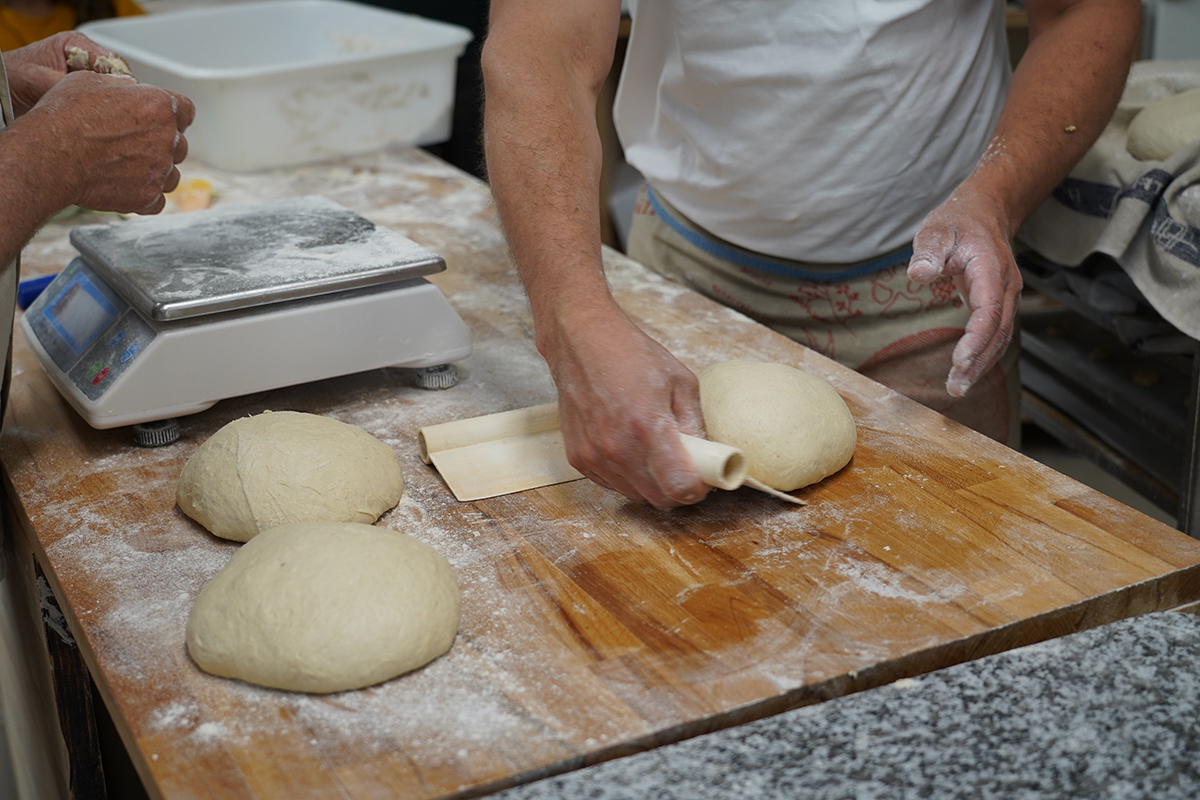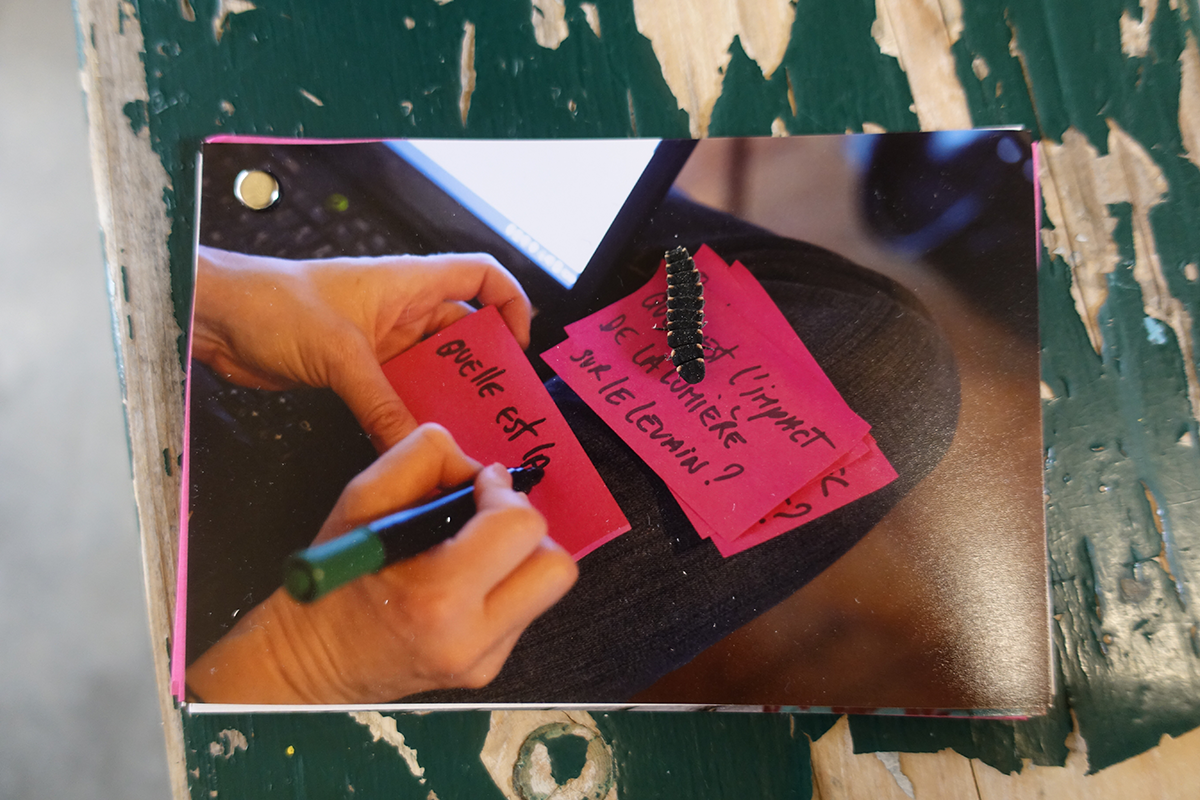laboratoire écologie et art pour une société en transition
Listenting to the Sourdough
An interview on cooperative practices and how to include the more-than-human with Marie Preston, artist and lecturer at the University of Paris 8 Vincennes-Saint-Denis (TEAMeD/AIAC Laboratory). Her artistic work takes the form of research aimed at creating works and documents of experience with people who are not necessarily artists. In recent years, her research has focused on the practice of baking, open schools, and libertarian and institutional pedagogies, as well as on women working in the care and childcare sector.
How do co-creative practices compare with political or social participation?
According to philosopher Joëlle Zask, participation in politics should be a combination of taking part, contributing and receiving. Cooperative artistic practices open up spaces where experiences and opinions can be shared, something which is also common to politics. However, political participation aims for an explicit goal, unlike many cooperative artistic practices which are “indeterminate” at first and whose objectives can change through various encounters. This is very much the plastic dimension of the relational forms that are invented in these practices.
Then there is the fact that these shared experiences are expressed in an artistic, tangible form, which is obviously a key difference compared to exclusively political or social participation. However, there is also another distinctive feature: groups are heterogeneous, and the practice only really works when the singularity of each voice in the collective emerges and reflects the group’s complexity. This is a real asset compared with other forms of participation.
Why did you choose the term “cooperative practices”?
Co-creation is a form of participation in which participants, who form a collective, run an artistic project in a cooperative manner and define from the outset what they are going to do together. The artist does not play a specific role in defining the action, whereas in cooperative practices, the artist is at the origin of the project even before the participants’ subjectivities are involved. In reality, however, it is never that simple: the two modes of participation are closely intertwined.
Given that these are processes that unfold over a long period of time, with different levels of involvement, there are phases where the artist is in charge of the project and others where the group acts autonomously, and vice-versa. There is a form of mobility between the different levels of participation.
Hence, I talk about cooperation, which allows the various voices and subjectivities to come to the fore at different times, rather than co-creation, which leaves less room for positions and functions to change and evolve.
How does the recent awareness of more-than-human communities and subjectivities influence cooperative practices?
Let us take the example of “Levain”, a collaborative research project in which I am involved as an artist and which brings together scientists, peasant bakers, craftspeople who do not produce their own wheat, and bakery trainers.
Our group met to identify the impact of the environment and the history of bakery on sourdough biodiversity. We already knew that the sourdough produced by peasants and bakers was biologically rich, and that this richness was fuelled in particular by the tools and hands of the bakers who handled it. This is a truly sympoietic relationship, to use Donna Haraway’s term. The research consists of finding out how far the sourdough feeds to acquire this important microbial diversity.

Fournil La Tit Ferme, 2022 © Marie Preston
In the course of this research, did the question arise of how to gather the voice of the sourdough?
Absolutely. However, before that, there was a whole process of reflection on how to build a common language between scientists, peasants, bakers, and artists, each of whom have their own specific vocabulary. After that, we tried to define how we related to this living entity. We were all aware that it requires special care. However, we soon realised that sourdough also takes care of us, i.e. that without sourdough, the bread we eat would not have the quality it has. Reciprocity – mutual care, as it were – is therefore very important.
Then we realised that we could not make the leaven talk – it cannot actually speak. Instead, we tried to project ourselves: if sourdough were an animal or a plant, what would it be? In answering this question, each of us tells the story of how we see our own sourdough. The examples given reveal very different relationships: domestication for some, cohabitation or friendship for others. Projecting oneself also leads to forms of anthropomorphisation, which in a way reduces the distance between the person and the sourdough, even if this may appear problematic in certain respects.
Finally, there is the question of how one listens and observes. In the animal world, we talk about ethology as the field of zoology that investigates the behaviour of non-human animals, but we can also speak of plant ethology, which in this case involves paying particular attention to how sourdough reacts. This type of listening focuses on the practice of living things, in this case the practice of baking. The scientific work consists of setting up experimental protocols to understand what some bakers know intuitively. In other words, our aim is not to get the leaven to talk, but to actively include it in our research.
Is the growing interest in participative or co-creative practices linked to the need for new imaginaries? In a changing world, what is the role of co-creative practices?
Cooperative artistic practices enable us to tackle societal and political issues in a different way, to open up our imaginations and to do so collectively. This collective act also helps to combat the feelings of anxiety that are generated when one is alone at home worrying about the climate crisis or the extinction of a species, and to become an actor rather than just an onlooker.
What about the interest shown by institutions?
Institutional interest in these practices is quite present in the criticism of cooperative practices, in that they might be said to contribute to legitimise the disengagement of the State from public services.
The associations or art centres that support these practices can offer a response to this question of instrumentalisation that might help minimise or even prevent it by suggesting that the group itself should be in a position to “invent institutionally”.
In other words, we can work on it by coming up with “counter-institutions”. I believe that cooperative artistic practices – because they are constantly reflecting on their own relational modalities – can also act on the structure that allows them to exist, if they have the will to do so.

Image: Bermuda, 2022 © Marie Preston
Public support for participatory practices, judged in ethical rather than aesthetic terms, is often justified in terms of social impact. What are the underlying risks of this approach?
In 2019, we coordinated a book, Cocreation, together with Céline Poulin and Stéphane Airaud, in which we dedicate an entire chapter to the question of evaluating these practices. Just because a project is funded with the aim of having a social impact or to be exclusively artistic does not mean that it should only be assessed through this filter. Of course, artists are going to want to create art, researchers are going to want to find scientific answers, people in civil society are going to want to have fun, make art, or find scientific answers: it is essential to find ways of evaluating these practices with regard to the implications of the people who make up the group, i.e. ultimately, the evaluation takes place downstream and not upstream. Once again, this raises the question not only of the indeterminacy of the project itself, but also the limits of its instrumentalisation.
Given your experience, what do you think are the important questions to ask yourself at the start of a cooperative practice?
Pedagogue Fernand Oury used to say that the first question to ask yourself when you join a group is: “What am I doing here?” Cooperation puts your own vulnerability to the test: are you ready to question your habits, your ways of doing things, to be challenged by the collective and by all the affects that the collective will bring? Are you prepared to let yourself be carried along by what is going to happen? To accept improvisation? To let go of the control you sometimes feel the need to retain when a subject is close to your heart or when you are emotionally involved in the artistic project?
How can one set up a co-creative practice in a community or territory other than one’s own?
I am very interested in reflexive anthropology, i.e. a form of anthropology that questions its own methods of investigation and its relationship with the people it meets, and above all, that incorporates the subjectivity of the researcher. The most important thing, when working in a new place, with people whose practices you do not know, is to listen, observe, be with the people, and be respectful of their differences, ethically and scrupulously.
Finally, you have to get involved and accept contradiction, which goes back to what we said earlier about the questions you need to ask yourself. I also think it is important not to arrive empty-handed: you have to be generous in your involvement and in every way you can.